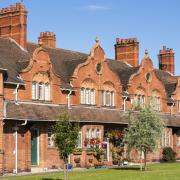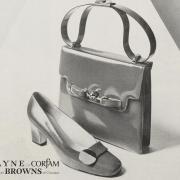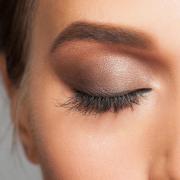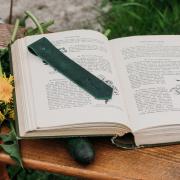This 17th-century manor has a ceiling designed to be the envy of the county, a bedroom fit for a king, and musket balls still to be found in its fields...
There has been a manor on the spot currently occupied by Dorfold Hall at least since the reign of Henry III (1216-1274). In 1602, Sir Roger Wilbraham, who served as solicitor-general for Ireland under Elizabeth I and went on to hold positions at court under James I, purchased the estate for his younger brother and heir, Ralph Wilbraham. Between 1616 and 1621, Sir Roger constructed Dorfold Hall on the site of the earlier manor, and it is this building, with just a few amendments over the centuries, you can see today.

In 1754, the estate was sold to a Nantwich lawyer, James Tomkinson, but in 1861 the Dorfold Estate passed back to descendants of the Wilbraham family, via the female line, when it was inherited by Anne Tollemache, wife of Wilbraham Spencer Tollemache, who became High Sheriff of Cheshire in 1865. It has remained within the same family ever since, often passing through the female line, with each generation having the sense to leave the original glories of the 17th century manor alone, simply adding contemporary comforts along the way.
Contemporary comforts are a necessity, of course, when the house in question is in fact a home, lived in, worked in and loved by the family who are more than aware that they are simply caretakers for the next generation.

Unlike the many Cheshire great houses that have passed into the hands of the National Trust or local authorities, continued family ownership means the hall has not remained frozen in time, in a period felt to explain it or display it to its best advantage.
‘We’re open to the public,’ says Candice Roundell, whose husband, Charles Roundell, took on the management of the estate from his parents in 2017. ‘The comments we get from visitors about what they find different with Dorfold is that even though it’s very old, it doesn’t feel like a museum – it feels lived in and still a family home.’
It’s impossible, upon entering any house that has stood firm in its place for centuries, not to wonder about how the families within survived the religious or political turmoil of the times, or even local battles. Did the inhabitants carefully keep their heads below the parapet, or were they embroiled in the events of the day?
‘Well, we know the Battle of Nantwich was fought around Dorfold Hall, in 1644,’ Candice says. ‘We find musket balls all the time in the fields. It was won by the Parliamentarians, but the house stayed in the family, so either they were on the winning side, or they played some very clever political games.
‘It hasn’t survived unscathed, it lost a third of its footprint after the Second World War, but unlike many of the larger houses, which really suffered after the end of both the First and Second World Wars,this family managed to keep it going.’

While musket balls in the fields might sound quite exciting, it’s the interior of Dorfold Hall that will really take your breath away.
The drawing room, which is on the first floor in accordance with the time in which it was constructed, has an extraordinary ceiling. Unwary visitors may well leave with a crick in the neck from gazing up at it, marvelling at its age and beauty.
‘The drawing room is said to have one of the finest examples of a Jacobean ceiling in the country. Sir Roger brought in a team of Italian plasterers in 1621, who did only around six in the country, and this is the only barrel-vaulted example of their work. It was as much a political strategy as a statement of wealth and power – the theme of the ceiling is the union of England and Scotland under James I, who came to the throne in 1603, named heir to Elizabeth I. The thistle of Scotland and the Tudor rose of England are depicted, as well as the Venetian rose and the fleur-de-lys.’
The whole room is stunning, with wood-panelled walls, vast oak floorboards and oil paintings of ladies and gentlemen in snow-white ruffs.

The panelling, floorboards, and magnificent fireplace are also original, the doors, however, are not. These were designed and installed by architect Edward Blore, in 1860, to replace the original, much smaller doors.
It was King James’s state progress of 1617 and the hope he would stay at Dorfold Hall that led to the design of the King James bedroom.
‘Dorfold was built as a stately home, a place the king could stay when on progress,’ Candice explains.
‘The room designated as his bedroom has his coat of arms represented in plasterwork above the fireplace. The panelling is original, too, of course. Additions to the room include an en suite, and the room is used most often as a bridal suite for the weddings we host. It boasts wonderful views to the south over the fields and views over L’Écurie and The Tack (the purpose-built wedding venues), and the avenue to the 1,000-year-old Spanish Chestnut tree.
‘Sadly, while we know King James definitely visited Dorfold, we don’t know whether he stayed and slept in that bedroom.’

It is innovation that has allowed Dorfold Hall to remain within the family, and the current guardians, Charles and Candice, are making their own mark on this historic building.
‘Since Charles took over in 2017, we have worked very hard to make it self-sufficient and sustainable, so it’s not just for this generation but for future generations. We started work on the house in 2017. It’s so important to heat these homes to maintain a constant temperature – and we were one of the first historic houses in the country to put in ground source heating, after Castle Howard. After that, it was a case of taking one room at a time and refreshing it. We haven’t changed anything structural to the hall itself, we’ve redone the driveways, repaired the clocktower, repaired windows and stonework and walls, and repainted and highlighted those historic elements that are so important.
‘We have planted trees and flower meadows, we have bees and chickens, are going to reinstate the kitchen gardens and plant fruit trees. So much more is planned, but the greatest change is the new buildings, which architecturally are in stark contrast to the hall, but we worked closely with English Heritage to create something subservient to the historical buildings but relevant to our time and the future.
‘We have created a new event space that brought new income streams, which we can invest back into the estate.’ These stunning buildings are so carefully and cleverly designed to sit comfortably in their space that they won the RIBA North West Award 2023 and RIBA North West Building of the Year Award 2023.

The interior décor of the hall has very much been Candice’s remit, one she initially found ‘a little bit scary’.
‘My husband said to me: “I’m very busy and have my own job, as well as running Dorfold, so you’re on your own on this.” I rang my sister-in-law, Laura Cavendish, Countess of Burlington (who is married to Lord William Cavendish, Earl of Burlington), and who is the future Duchess of Devonshire, to ask for advice. She introduced me to Edward Bulmer. He’s written a very good book, in which Dorfold is featured – The Colourful Past: Edward Bulmer and the English Country House – and he gave me a bit of a helping hand with colour schemes. He uses natural paints as well; there are no paints with nasty plastics, every paint is breathable.’
One aspect of the changes Candice has made is clear in the artwork she has chosen for the rooms, which does not follow the usual safe but dull approach many owners of historic properties take.
‘Charles’ first degree is history of art, and I am a vet but I did history of art too, and Charles’ father, Richard, was chairman at Christie’s for more than 20 years, so we all have quite artistic inclinations, shall we say, and just choose pieces that are artistically in line with who we are, not limited to the age of the house. We like contemporary art, but we always ask ourselves if it will work, and how it talks to the old antiques and the old portraits, and we’ve found that by being a little bit brave it works better than people think.’

Dorfold Hall is a glorious example of what can be achieved when a home is loved, when a family has foresight(and this family clearly had foresight at the most important of times) and when contemporary thinking is brought to bear on a historic space. A visit should be a must-do on everybody’s list..
The photography for this feature was kindly supplied by Christopher John, a professional photographer specialising in landscapes, architecture and interiors. christopherjohnphotography.co.uk
Dorfold Hall is currently on the market for £11.4 million




























